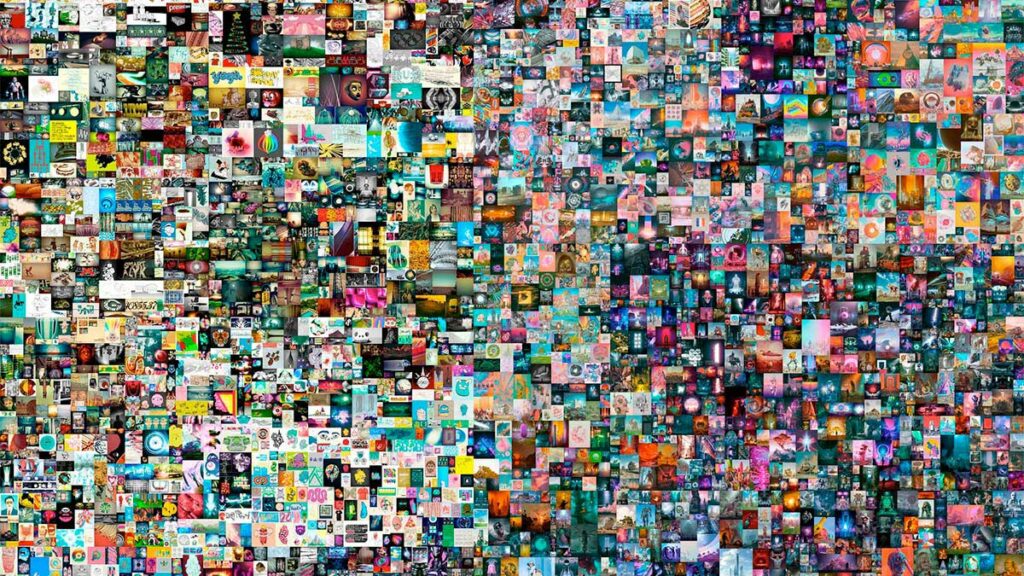For the bigger part of human history, art used to be a very physical business. If one was rich or powerful or, in most cases, both, one could commission an artist to create, let’s say, a marble statue, a portrait, or a piece of furniture. Michelangelo’s David (commissioned by the Florence Cathedral), the portraits of Maerten Soolmans and Oopjen Coppit by Rembrandt, or the Tufft Table made by Thomas Tufft for Richard Edwards of Lumberton are examples of this. In the relatively few instances where two copies of the same artwork existed, it was clear that one must have been counterfeit. Over the centuries, art scientists identified many approaches to decide which copy was the real deal – from carbon dating to pin stroke analysis and X-Ray scanning. While it certainly never was, and still is not, trivial to know whether any given piece of art was original or not, the industry worked reasonably well overall.
This system started to shake when photography became an established art form
Since any photograph is, by definition, only a print of a negative, five, ten, or a hundred copies of the same picture could all be “authentic.” Naturally, this created problems since it was much more challenging to find a buyer paying several million dollars for an “original” Helmut Newton if the whole concept of originality was put in question. With the emergence of the internet and the digitalization of art, things finally reached their breaking point. Why would one want to buy a music CD if the same song could be downloaded or streamed? Creators of art particularly impacted by digitalization, such as singers, movie producers, or the creators of video games, tried to counteract by adding physical elements to their creations. This resulted in the rise of live concerts (which increasingly represented a large share of singers’ income) and special edition DVDs with physical tokens, maps, or anything else that seemed to make sense.
Today, a new way of ensuring the authenticity of digital and digitized art is much talked about in popular and business press: non-fungible tokens (NFTs). An NFT is a digital certificate based on blockchain technology (the same technology that underlies cryptocurrencies, such as Bitcoin), that allows marking one specific piece of digital art as “authentic.” An NFT does not prevent the art piece from being copied. However, it ensures that every copy can clearly be distinguished from the original. To put it differently, an NFT allows to digitally sign the original creation, making it much easier to sell it on the market.
With the pandemic, NFTs have entered a rising share of art domains
Like in every sector, the COVID-19 pandemic has accelerated the digitalization of art and in response, in recent months non-fungible tokens have entered a rising share of art domains. As reported in the New York Times, the digital artist known as Beeple (Mike Winkelmann) used NFT to sign his piece “Everydays: the First 5000 Days,” which was sold for $69.3 million at Christie’s in March 2021. Singers used NFT to digitally sign and sell songs to make up for revenue lost due to cancelled live concerts. Soon thereafter, American rock band Kings of Leon launched their album “When You See Yourself” in the form of an NFT consisting of a package of digital goods which generated $2 million in sales. NFTs are seen by some as an alternative for musicians to the streaming economic dead-end, and in recent months have also been extended to all forms of digital creations including virtual in-game assets in computer games, digital sports collectibles, movies, fashion, and pornography.
While they are certainly not the only application of blockchain technology, nor even its most important one (that price will go, at least for the foreseeable future, to crypto-currencies), NFTs will without a doubt transform the art sector which, in recent years, has evolved into a significant asset class for financial investors. So you will soon be able to buy a virtual statue, painting, or table and be sure it is original. Furthermore, on the bright side, it requires much less space than putting a 5 x 2 meter marble statue of David into your living room…
This post gives the views of its author, not the position of ESCP Business School.
